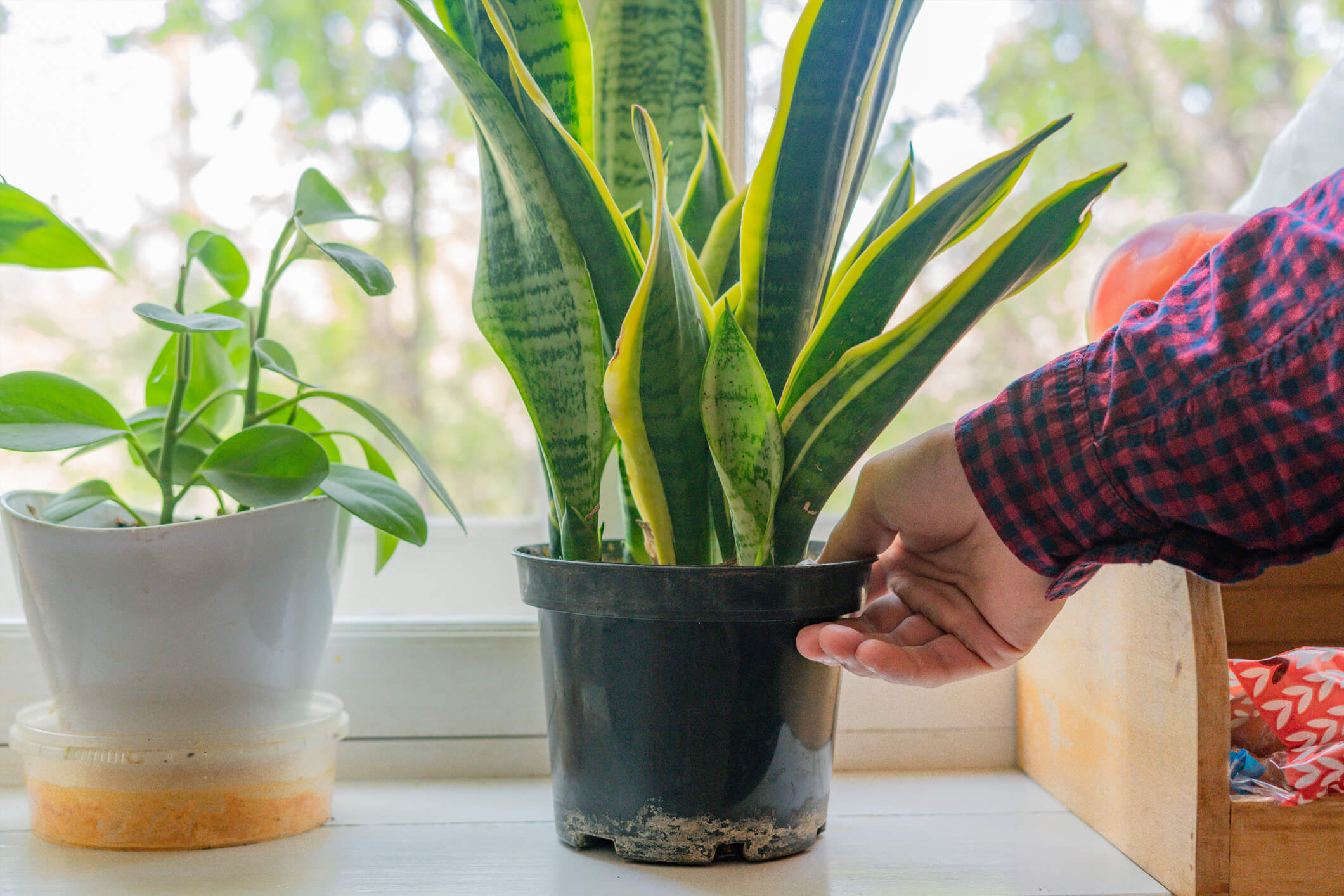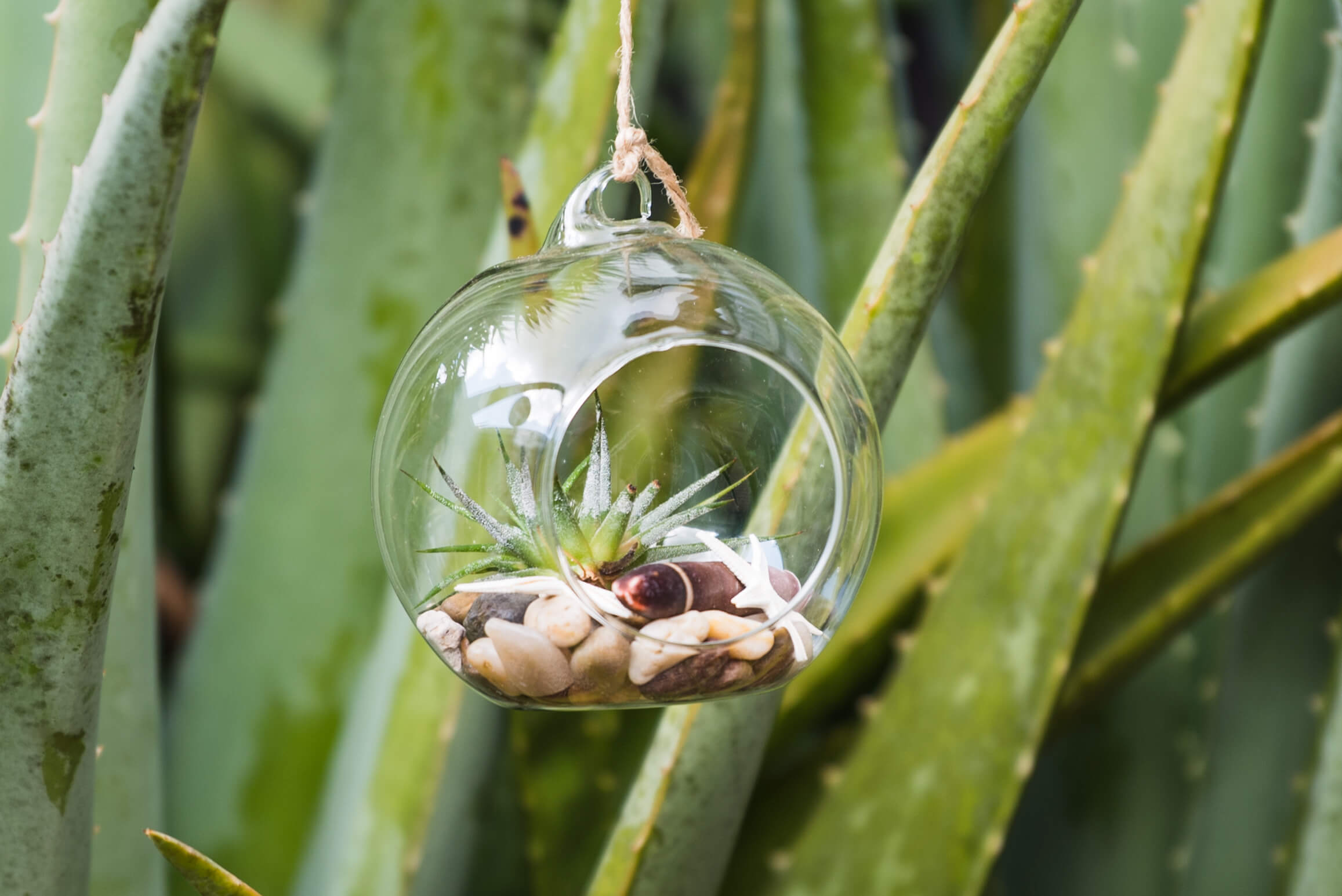Adding houseplants to your home has many benefits: improved air quality, reduced stress levels, and a sharper focus. They’re also beautiful, lush decor options when kept alive and healthy. House plants can add the right amount of greenery to any kitchen, bedroom, home office, and even bathroom to give it an organic, softer feeling.
House plants come in all shapes and sizes, so you can really cover as much area in green as you want! No green thumb required; with a little TLC, we’ve rounded up six house plants that are sturdy enough for even the most hands-off plant parent.
Succulents

When you think of house plants, probably the first ones that come to mind are succulents! These little hearty plants come in a variety of colors and sizes and fit perfectly into any decor scheme. Succulents should be watered every 10-14 days in warmer months, and about every 21-30 days in the colder months. Be sure to let the soil dry out between waterings. You do want to make sure that your succulents get enough light (they need about six hours a day), so a sunny windowsill is a great home for them. If you have multiple succulents in an area, you’ll also want to rotate them every now and then the same one isn’t always in the direct sun.
Snake Plants

Want to add a little height to your indoor spaces? A snake plant (or sansevierias) may be for you! These plants have long leaves that reach towards the sky, giving it a spiky appearance. Depending on its root structure and growing pot size, this house plant can grow anywhere from eight inches to seven feet in height. Snake plants should be watered every two to eight weeks, depending on the climate, taking care to not dump water on the “cup” of the plant (this encourages rot). These plants prefer moderate sun (no direct sun), but can also tolerate less or more, and can still thrive in poorly circulated, stuffier rooms. Snake plants are a great entry-plant to start your collection with.
Herbs

Spice up your kitchen window with plants that not only add that bit of green; they’re useful too! Herb plants are so easy to grow indoors, plus you’ll have them right on hand if your recipe calls for a pinch of this or that. Some easy to care for herbs include basil, chives, thyme, rosemary, oregano, and mint. These house plants will thrive best in sunlight, making them ideal for your kitchen window sill. It’s important to make sure these herbs have consistently wet soil to grow in but are not waterlogged. When selecting your pots, be sure to pick containers that have drainage holes in them so water doesn’t build up and mold.
Spider Plants

Love the look of lush plants that reach out? Spider plants are another easy plant to take care of, and look incredibly impressive. These plants require moderate sun and an occasional fertilizer (about every 21 days) to keep looking great. The soil should be slightly moist, with weekly waterings of distilled water/rainwater in the spring or summer, while for the winter, you’ll want to make sure the soil has dried out a bit. If you’re taking proper care of your spider plant, you’ll actually end up with even more plants as the plant propagates little offshoots.
Air Plants

If you’re looking for plants specifically that will do well in your bathroom, air plants (or tillandsia) may be right up your alley! Sunny bathrooms are perfect for these plants because the humidity from daily showers mists this tropical plant enough to keep it healthy. If this is the way you choose to water them, be sure you’ll be putting these plants in a bathroom you use often (they may die in your guest bathroom if no one is showering in there). Since these house plants don’t sit in a traditional planting pot, there are many ways that these air plants can be hung around your bathroom, making them decor as well! When choosing your container, make sure it is not enclosed, air plants require good ventilation in their environment.
Aloe Vera Plant

A member of the succulent family, having an aloe vera plant in your home can be not only nice to look at; it’s functional too. The gel from aloe vera leaves reduces inflammation and can be used on sunburn, cuts, or any skin irritation. These are handy house plants to have around! Plus, taking care of an aloe plant is pretty simple, even if you don’t get a lot of sun. In fact, indirect sunlight is key to keeping the leaves from yellowing and drying out. Aloe vera plants should be watered every two to three weeks in the spring/summer seasons and even more sparingly in the colder months. To know when it’s time to water, the top third of the potting soil should dry out before it’s time to water again.
Adding house plants not only brings some life to your space, they can be good for your health and give you a new little project that isn’t too intensive with the plants we mentioned above. Do you have any of these in your home yet?
Want a bigger challenge? Check out our previous blog on how to start an indoor garden.

